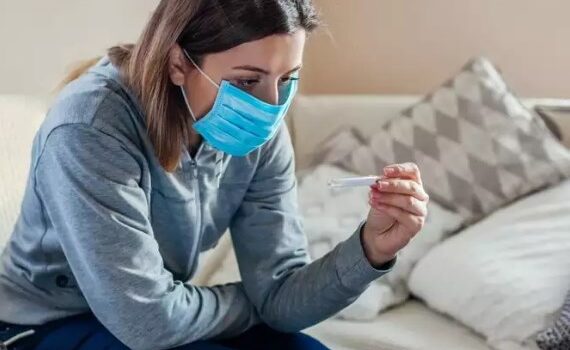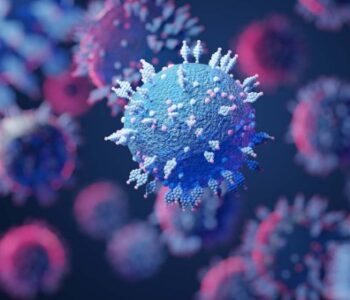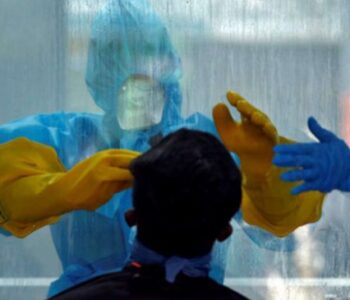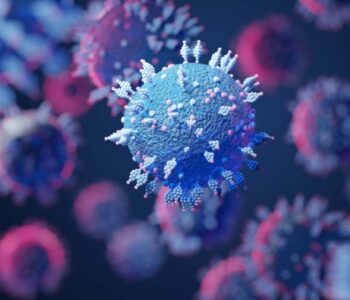 Covid 19 Pandemic
Covid 19 Pandemic
Long Covid Part – 1
The Covid 19 Pandemic- 1 – The COVID-19 pandemic, also known as the coronavirus pandemic, is a worldwide coronavirus disease. The 2019 (COVID-19) pandemic caused by the coronavirus 2 that causes severe acute respiratory syndrome (SARS-CoV-2). The new virus was initially discovered in December 2019 in the Chinese city of Wuhan; a lockdown in Wuhan and other towns in Hubei’s surrounding region failed to control the spread.

On January 30, 2020, the World Health Organization (WHO) declared a Public Health Emergency of International Concern, and on March 11, 2020, a pandemic. The Alpha, Beta, Gamma, Delta, and Omicron forms of the virus are among the first to appear. More than 269 million illnesses and 5.29 million fatalities have been confirmed as of December 11, 2021, making it the worst pandemic in history.
The symptoms of COVID-19 may vary from non-existent to life-threatening. Patients who are older or have specific underlying medical issues are more prone to have severe sickness. COVID-19 is an airborne virus that is disseminated by minute particles contaminating the air. Infection is more likely to spread among individuals who are close together, although it may also spread across greater distances, especially indoors in poorly ventilated places. Transmission may also happen via contaminated surfaces or fluids;however this is unusual. Infected people may be infectious for up to 20 days and transmit the virus even if they don’t show any symptoms.
Vaccines Have Been Licensed For Use in Several Nations.
Vaccination efforts for the general public started in December 2020. Social distance, wearing face masks in public, ventilation/air-filtering, covering one’s mouth while sneezing or coughing, hand washing, sanitizing surfaces, and quarantining people who have been exposed or are symptomatic are all advised preventative measures. Treatments are aimed at alleviating symptoms, however antiviral medicines are being developed. Travel restrictions, lockdowns, company closures, workplace hazard precautions, testing processes, and tracking infected contacts are all examples of government involvement.

Panic purchasing, supply chain disruptions, and food shortages all contributed to widespread supply shortages. As a consequence of the near-global lockdowns, pollution emissions dropped to levels never seen before. Many educational institutions and public locations were closed in part or whole, and many activities were canceled or rescheduled. Political tensions grew as misinformation spread via social media and the mainstream media. The epidemic has brought up concerns of racial and regional discrimination, health fairness, and finding a balance between public health and individual rights.
Etymology
There are various names for the pandemic. Despite the presence of previous human coronaviruses that have produced epidemics and outbreaks, it is often referred to as “the coronavirus pandemic”
The virus and illness were dubbed “coronavirus,” “Wuhan coronavirus,” “the coronavirus epidemic,” and “Wuhan coronavirus outbreak”, with the sickness dubbed “Wuhan pneumonia” during the first outbreak in Wuhan.

The World Health Organization recommended that it be called 2019-nCoVand 2019-nCoV acute respiratory diseaseas interim names for the virus and disease in January 2020, in accordance with 2015 guidance and international guidelines against using geographical locations (e.g. Wuhan, China), animal species, or groups of people in disease and virus names, in part to avoid social stigma.
On February 11, 2020, the WHO announced the official designations COVID-19 pandemic and SARS-CoV-2. Co is for corona, VI for virus, D for disease, and 19 for the day the epidemic was initially discovered, according to Tedros Adhanom (31 December 2019). In public communications, the WHO also refers to “the COVID-19 virus” and “the virus that causes COVID-19.”
Virus variants are also referred to by a variety of names. Initially, they were given names based on the locations where the variations were discovered (e.g. Delta variant was known as the Indian variant). The variant’s PANGO lineage was represented in a more systematic naming method (e.g., Omicron’s lineage is B.1.1.529). The WHO implemented a policy of utilizing Greek letters for variations of concern and variants of interest by the end of May 2021.
Background
The first reported epidemic began in November 2019 in Wuhan, Hubei, China, despite the fact that the virus’s specific origin is still unclear. Many early cases of COVID-19 have been connected to visitors to Wuhan’s Huanan Seafood Wholesale Market. However, human-to-human transmission may have been occurring prior to this. SARS-CoV-2 is a recently found virus with strong ties to bat coronaviruses, pangolin coronaviruses, and SARS-CoV.
The virus is most likely zoonotic, meaning it came from bats or a closely related species, according to the scientific consensus.
Regardless, the topic has sparked a lot of debate. The origins debate exacerbated global tensions, particularly between the US and China.
On December 1st, 2019, the first known infected individual became unwell. That individual had no apparent ties to the subsequent wet market cluster. On the other hand, an earlier instance on November 17th may have happened. The market was connected to two-thirds of the first case cluster. The index case was most likely infected between mid-October and mid-November 2019, according to a molecular clock study.

The number of persons who have been tested for COVID-19 and whose results have been verified positive according to official procedures is referred to as the official case count.
Early on, several nations had formal regulations prohibiting the testing of people who only showed minor symptoms. According to an examination of the epidemic up to the 23rd of January, 86 percent of COVID-19 infections had gone undetected, and these infections were the cause of 79 percent of recorded cases. According to many additional studies, the overall number of infections is much higher than the number of cases recorded.
On April 9, 2020, early findings revealed that 15% of a population sample in Gangelt, Germany, tested positive for antibodies. Gangelt is at the heart of a large infection cluster.
Positive COVID-19 antibody tests were identified in pregnant women in New York City and blood donors in the Netherlands, indicating that there were more infections than reported. Seroprevalence estimations are cautious since some studies demonstrate that people with mild symptoms don’t have detectable antibodies.
In early 2020, an examination of cases by age among China revealed that instances in people under the age of 20 accounted for a small percentage of all cases. It was unclear if this was due to the fact that young individuals were less likely to be infected or to exhibit symptoms and be tested, or both. Children and adults were equally likely to be infected, according to a retrospective cohort research in China.
The basic reproduction number (R0) for COVID-19 was first estimated to be between 1.4 and 2.5 in January, however a further investigation suggested it may be about 5.7. (with a 95 percent confidence interval of 3.8 to 8.9). R0 is not to be confused with the effective reproduction number (often referred to as R), which takes into consideration mitigation measures and herd immunity and might vary between populations/circumstances.
Pradeep Chopra, MD
The Long Covid Treatment Center
102 Smithfield ave.
Pawtucket, RI 02860
Email; [email protected]





